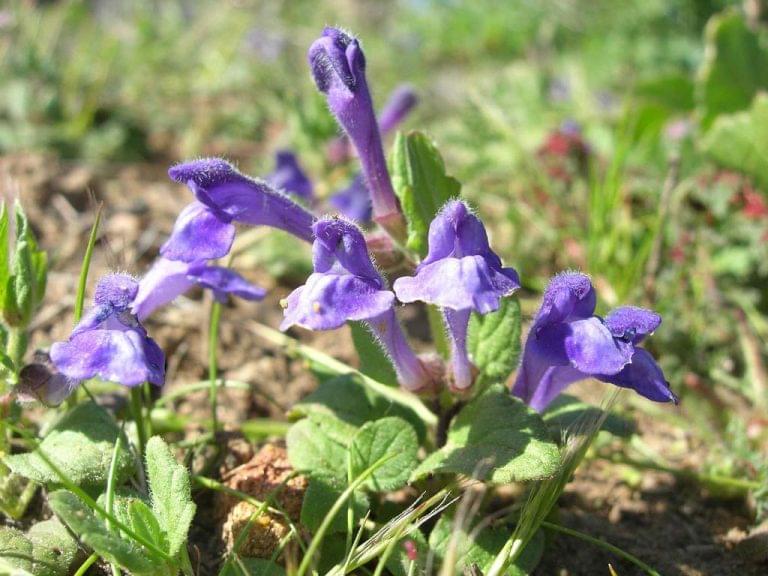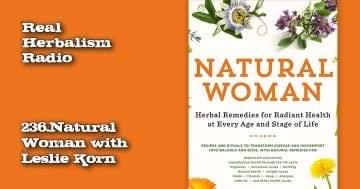Huang Qin is a widely used plant in Chinese herbal medicine with a range of applications. To understand all of these applications, I will start by discussing the category Huang Qin belongs to and then describe in further detail the particular qualities of this versatile plant.
Huang Qin belongs to a category of herbs that “clear heat and dry dampness.”
What Does Clear Heat and Dry Damp Mean?
What do we mean by “clear heat”? In Chinese medicine, the symptoms a person experiences can be broken down along for main axes: hot or cold; damp or dry; interior or exterior; arising from excess or deficiency. Contrary to what many of my patients assume, the quality of hot vs. cold symptoms has nothing to do with taking the person’s temperature using a thermometer. A “heat” symptom includes the person subjectively feeling hot (even if the thermometer says they are at 97.5 degrees F, or whatever), red face, sweating, flushed skin, bright red tongue, yellow tongue coating, rapid pulse, craving for cold water, yellow urine, possibly burning sensation with urination, etc. The Chinese medicine concept of heat symptoms fall very easily within the common sense notion of what heat and feeling hot are like. A person with these symptoms can have a fever as well, but it is not necessary for a fever to present to talk about this person experiencing pathological heat.
Note: By “pathological” I mean heat that does damage to the body. There is a Chinese medicine notion of physiological heat, which is healthy heat that the body needs to digest, reproduce, move, think, breath and otherwise function appropriately. The presence of heat itself is not a problem, the presence of unpleasant heat symptoms is.
When a patient has heat symptoms, the correct treatment approach–especially when the heat is near the surface or on the exterior–is to clear or cool the heat.
Skullcap or Huang Qin Use for Clearing Heat
How does Huang Qin–or any herb–“clear” heat? Huang Qin opens the channels and collaterals of the body and guides pathological heat out in order to resolve symptoms. Most herbs in Chinese herbology that are used to clear heat utilize the flowers or leaves of the plant. Just as the extremities of the plant vent to the atmosphere, so to do these herbs aid the body in venting and releasing heat, toxins and other things the body doesn’t need. Huang Qin clears heat by moving the heat to the surface of the body and releasing it outwards.
Skullcap or Huang Qin Use for Drying Dampness
What do we mean that Huang Qin can “dry dampness”? As mentioned above, dampness is a way to categorize a particular set of symptoms a person can have. What is a “damp” symptom? As with the Chinese medicine concept of heat, dampness also falls fairly neatly within what you might expect: sweating, drooling, retaining fluid, edema, puffiness or swelling in the face or extremities. A person with pathological dampness may have a difficult time drinking water, may easily feel water-logged, their urine may be cloudy, their pulse will have a “soggy” quality to it, the tongue body is puffy or swollen, and the tongue coating is likely to be wet or greasy in appearance.
When a patient has symptoms of dampness, the correct treatment approach is to dry or drain the dampness.
How does Huang Qin “dry dampness”? This is where things get very interesting. When removing dampness from the body, it is actually better to use the root of the plant as opposed to the leaves or the flowers. The root of any plant has a downward-drawing action on the body. Consuming the root pulls the dampness out of the tissues and guides the dampness out of the body usually through the urine. The venting quality of the leaves and flowers of Huang Qin can also pull dampness out of the tissues and release it through the skin, but the root is more powerful.
Skullcap or Huang Quin for Damp Heat
Huang Qin is most appropriately used to treat conditions where damp-heat is present. Which is to say, if you are trying to treat a condition which is hot and dry (i.e., no dampness is present), Huang Qin can easily be too drying and cause dryness symptoms like dry, cracked skin, bloody noses, dry eyes, etc. Similarly, if you are treating a condition which is damp and cold (i.e. no pathological heat is present), Huang Qin can cause significant digestive upset. Traditionally, Huang Qin is contraindicated in cases of cold from deficiency of the Spleen and Stomach. The body needs heat to digest. If you over-cool the body, or you cool a body that is already cold, digestion will be negatively affected and this will lead to an increase in dampness symptoms, not an improvement.
Practical Application: Skullcap or Huang Quin for Diarrhea, hot sores, swellings, insect bites and rashes
What conditions is Huang Qin used to treat? Traditionally, Huang Qin was used for dysenteric disorders and jaundice. Today, it is normally used for what Chinese medicine refers to as “hot type” diarrhea. This is diarrhea with urgency, yellowish stools and a burning sensation at the anus after bowel movement. This is opposed to “cold type” diarrhea which tends to produce gray stools, odor-less stools and most often occurs first-thing in the morning and then does not show up again until the next day. This herb is safe to use during pregnancy and has the quality of being able to “quiet a restless fetus.”
Huang Qin can also be applied topically for hot sores and swellings. This would not be my first choice herb for insect bites, but it can be helpful for acne or heat rashes. It is also great to make a tea bag out of this, cooled to a comfortable temperature, and placed on red, swollen or sore eyes.
Cautions for Skullcap or Huang Quin
Generally speaking, Huang Qin is a very safe herb with side effects limited to mild stomach upset and short bouts of diarrhea. As always, correct diagnosis is key to successful treatment. Pay attention to how symptoms evolve in response to the herb, and make adjustments accordingly.
In contemporary America, I avoid prescribing herbs to pregnant women. Even though these plants have had centuries of observation and quite a bit of modern research demonstrating efficacy and safety, I don’t want to put myself in conflict with a patient’s physician or midwife.






